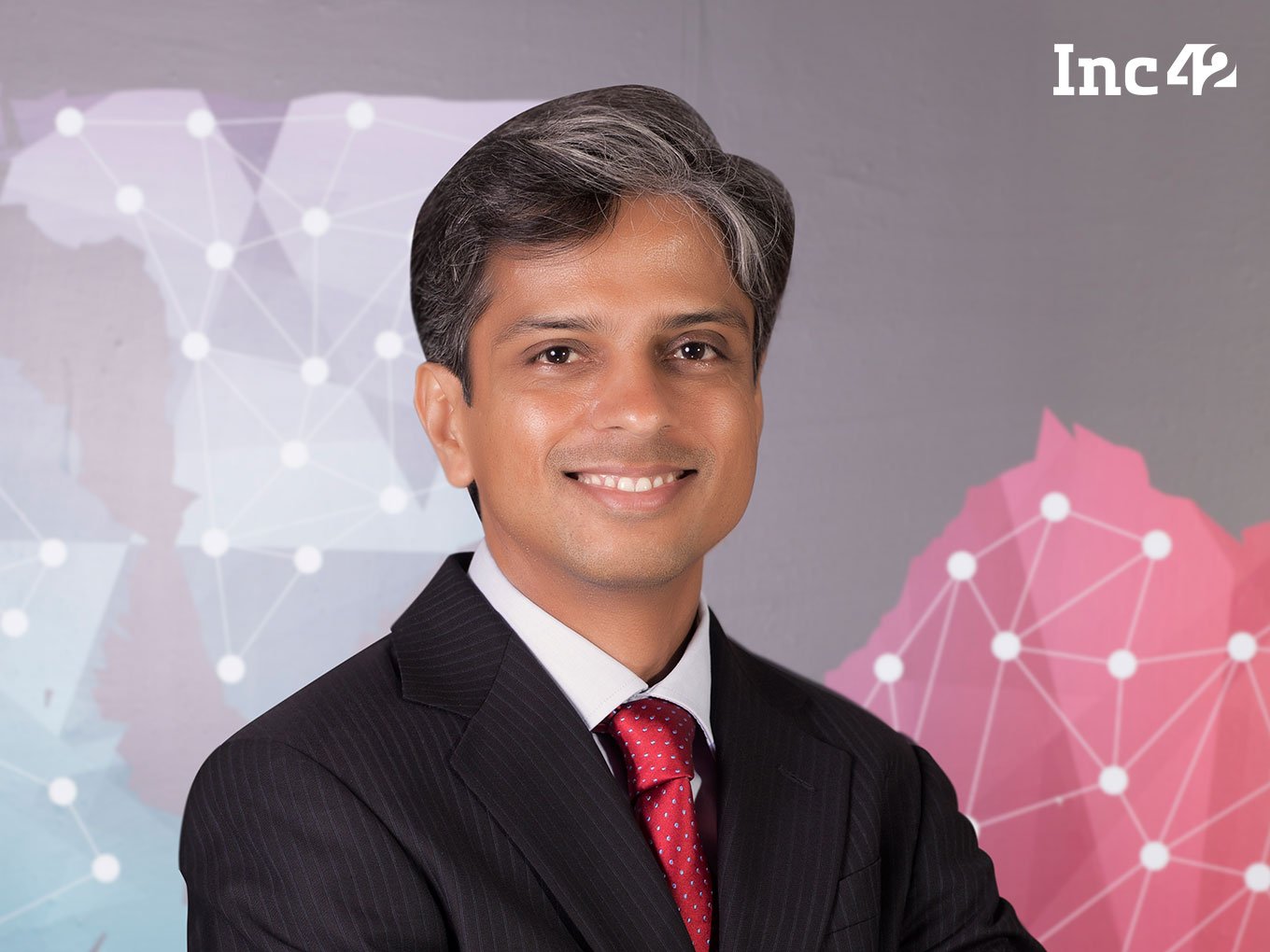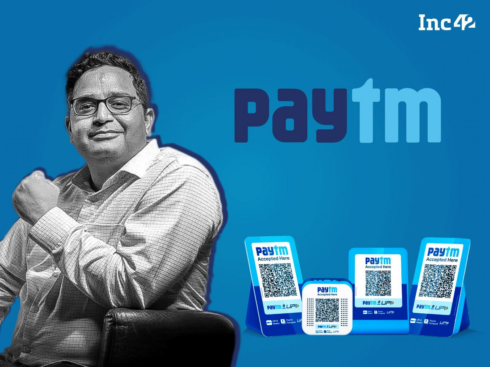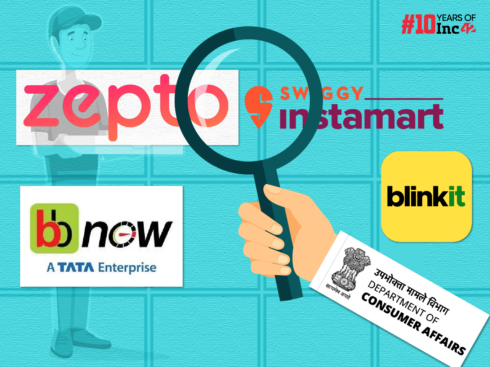SUMMARY
Accessibility to and availability of micro loans and efficiency due to digital processes is changing the digital lending landscape
DMI Finance, is focused on a digital-only lending ecosystem and is building bespoke APIs for its partners
Since lending companies can’t access Aadhaar e-KYC anymore the customer authentication process is time-consuming for NBFCs

Micro, small, and medium enterprises (MSMEs) comprise an important pillar of the Indian economy, with a 28.77% share in the country’s GDP (2015-16). But despite this claim to fame, the Indian MSME segments is largely unorganised. Apart from the lack of structure and processes, one of the biggest deterrents in MSME growth is inaccessibility to easy credit.
The good news is that digital lending to MSMEs in India has the potential to grow up to $100 Bn by 2023, according to a recent report. The lending scenario for not just MSMEs but for all kinds of enterprises is looking brighter with digital lending mechanisms being enabled by government initiatives like the Unified Payments Interface (UPI), which serves as a backbone for non-banking financial companies (NBFCs).
Another important factor has been the drastic cut in loan disbursal time, especially with the coming of new-age NBFCs such as DMI Finance, Capital Float, LendingKart, etc, who are doubling down on technology-only processes for lending.
Delhi-based DMI Finance was founded in 2008 with a mission to build a platform on the cutting edge of the Indian credit market. The NBFC is boosting digital credit availability in a big way with its bespoke, advanced APIs for its lending partners and customers, making it a lender of choice in the digital ecosystem.
To understand the DMI perspective on the projected growth of digital lending in India, we caught up with Shivashish Chatterjee, Co-Founder and Joint MD of DMI.
Chatterjee shared with us his views on what’s triggering the upward curve in digital lending, UPI 2.0, and spoke about automatic repayments, how if and when they come, could prove to be a gamechanger for the entire lending infrastructure and lending companies, he said. Here are some excerpts from the interview:
Inc42: What do you attribute the phenomenal growth of the digital lending ecosystem in India to?
Shivashish Chatterjee: There are two primary things to consider from a digital lending perspective. Simply put, the range of activities that can be financed is increasing significantly while at the same time the number of people who can avail of credit to indulge in those activities is also rising rapidly. The multiplicative effect is very powerful.
Technology is dramatically reducing the cost of origination. If you go back a decade or more, lenders did not know how to underwrite or collect a loan of less than INR 5,000 because the fixed cost of originating that loan was more than INR 500. That cost structure automatically put a floor on how small the loan could be and still be profitable for the lender. That floor was about INR 50,000.
Now, if that INR 500 can be reduced to INR 50 then suddenly an INR 5000 loan becomes viable. And that’s just illustrative. There are players in the fintech space who believe that they can make an INR 1000 loan viable. So, a purchase of INR 6000 is a financeable activity in 2019 while it was clearly not feasible in 2005.
So one dynamic that’s causing this growth in the digital lending volumes is the sharply higher range of activities that can be financed owing to the dramatically lower cost of origination that is enabled by technology. Obviously, technology has the highest impact on tech-enabled platforms and so we are seeing this surge in volume in the fintech world compared to the physical paper world.
The other dynamic is the explosion in the digital infrastructure itself that is bringing more and more people into the target demographic for digital lenders. NPCI has done a fabulous job of building the digital payment rails for the country and the government has pushed most of the country into the ranks of the “banked”. The word “cheque” does not exist in the lexicon of the new age lenders. Money transfer and reconciliation which was a huge pain point is now largely solved and that allows the digital lenders to address a much larger population. Smartphone penetration has gone from virtually nothing to 400mm just in the last 5 years.
The proliferation of transaction data whether it be on ecommerce platforms or Merchant POS or e-wallets has made it possible to assess the creditworthiness of individuals who are new-to-credit and hence ineligible under traditional, credit history-based underwriting models. Combined with 4G penetration, cheap data and widespread adoption of API-driven data transfer, the smartphone proliferation is really revolutionizing credit transmission in India and truly holds the promise to credit democratization. And we are still only scratching the surface. GST is a game-changer for SMEs and MSMEs. Credit availability to these sectors is about to skyrocket. We believe that in ten years the digital credit landscape in India will be unrecognizable to an observer who compares it to today.
Inc42: What role do you feel NBFCs such as DMI Finance can play to contribute to this growth?
Shivashish Chatterjee: NBFCs such as DMI Finance represent the supply of credit in this new ecosystem. The consumers and SMEs/MSMEs described earlier represent the demand for credit and the broader fintech community represents the transmission infrastructure that connects the supply and demand.
In order for this ecosystem to thrive and grow it is not enough that there are hundreds of well-funded fintech start-ups leveraging technology to bring credit demand to the capital providers. It is vitally important that capital providers themselves embrace and adopt technology like never before so that the benefits of the fintech infrastructure providers actually filter to the end borrowers. Banks obviously are the biggest source of capital but it will take time for Indian banks to fully connect themselves to this new transmission infrastructure.
Hence the immediate need for new-age NBFCs who can partner with the demand aggregators in the language of APIs and call-backs and process-automation. Under our Digital lending business, we are focused on being that capital provider. Any network is only as efficient as its slowest link. Today, in the network of digital credit, that slowest link is the one connecting the aggregators to the banks and NBFCs. We are trying our utmost to change that by being a new kind of NBFC.
Inc42: UPI 2.0 enables features such as overdraft facility and one-time mandate (payment scheduling). How do you see UPI 2.0 helping the digital lending market in India?
Shivashish Chatterjee: UPI is creating new possibilities which are force multipliers for many payments and banking related activities. Our customers can repay EMI’s using their UPI handle and it’s very efficient and at a fraction of the cost of other methods. UPI 2.0 was supposed to bring some interesting use cases for lending especially around automatic debit and standing instructions that would qualify under the Negotiable Instrument Act, 1881. But when the announcement came in Aug 2018, we did not see a transformative new use case. We are hopeful that this will change in the future. The innovation in UPI 2.0 that allows pull-payments in addition to push-payments is a building block for payments innovation in credit. We are confident that NPCI will build on it in future enhancements.
Inc42: Besides extending credit facilities, what more do you think is needed as far as BHIM UPI is concerned?
Shivashish Chatterjee: Let’s take the first part of that question and examine the assumption itself. BHIM is currently a payment app for UPI. Anyone with a UPI handle can make payments to anyone else with a UPI handle using BHIM. There are many other services including those powered by Google and Whatsapp that provide the same functionality for people in their ecosystem. If we want to think of BHIM as going beyond payments and enabling credit to their users then it needs greater functionality. With UPI 2.0 a merchant can send an invoice to its client along with a pull request for the payment of the invoice. Ideally, the customer should also have an in-app option to finance this invoice.
For BHIM to be able to provide that option and further expand the digital payments and credit ecosystem, it will need a clean way to allow lenders to plug into the app and provide them with enough information to be able to underwrite the borrower right there in real time. So there are a couple of issues with that because BHIM is a government-sponsored service. First, it cannot discriminate among lenders. So it will need to make a credit platform on BHIM available to any qualified lender that wants to connect. Which it may not want to do.
Second, the data privacy issues get magnified when the government is involved. So on balance, my instinct is that BHIM is not the right platform for extending credit services and that particular innovation is best left to private applications. But it is certainly possible should the government want to head in that direction and UPI, in general, is a great enabler of credit democratization.
Inc42: While UPI 2.0 is set to help digital lending further, the Supreme Court has struck down Section 57 of the Aadhaar Act. Now, private companies can’t ask for customers’ Aadhaar ID. Reverting to a paper-based online authentication process from a paperless one could be a costly and time-consuming affair for NBFCs. What are your views on this?
Shivashish Chatterjee: E-KYC using Aadhaar was a boon to the credit ecosystem in India. With the SC order that functionality has been taken away. Seven years ago KYC involved mounds of self-attested photocopies and field visits to verify the authenticity of those documents. This ate up days and weeks of effort. In early 2018 that had reduced to 30 seconds and no paper. Undoubtedly the verdict is a major setback and, unfortunately, the bottom of the pyramid, the poorest people, are the hardest hit. The well-off still have Driver’s Licenses and Passports to prove their identities but most farm labourers and domestic helps only have Aadhaar. So ironically, in the name of preserving privacy, the order has the unintended consequence of completely disenfranchising the people who need help the most. So anyone who is invested in social progress and financial inclusion should hope that all the concerned parties arrive at some compromise on this issue soon.
But it is incorrect to say that we are automatically back in a world of full-paper KYC. Technology is an irresistible force and already there are several viable alternatives to biometric authentication for some part of the target population. Offline verification using XML and pdf is widely seen as consistent with the SC order. It has its drawbacks and primary among those is that it requires far more user interaction than biometric authentication. Which in turn means that it is not a good solution for the bottom of the pyramid. The underlying infrastructure is also not as robust as EKYC and so it is unclear whether it will work at large scale adoption. But these are early solutions to a temporary hurdle and the solutions will rapidly get better. I believe that Aadhaar is here to stay and the use cases will be identified and codified into law over a period of time. The benefits are just too large to be ignored.
The recent legislation that was passed by the Lok Sabha expanding the definition of Aadhaar authentication and defining consent-based use cases shows that the government is acutely aware of this. The RBI Committee headed by Nandan Nilekani for exploring further digitalization of the financial systems is more evidence that the corridors of power will find the solution. Many of the tech solutions involving facial recognition and in-video verification are in use around the world but need the RBI’s blessings for the regulated lenders in India.
However, should I be proved wrong and we are indeed back to 2010 for KYC purposes then the outlook is somewhat bleak. Identity and document fraud killed the retail loan business in its first incarnation with rampant losses forcing businesses to shut. Aadhaar-based KYC largely eliminated that and allowed lenders to focus on credit rather than fraud prevention. It will be a shame if that is indeed entirely reversed. Financial inclusion will be the highest profile casualty of such a regressive step.
Inc42: The RBI has reportedly agreed to defer Basel III implementation by one more year. This will effectively expand the lending capacity of Indian banks by $52.24 Bn (INR 3.7 Lakh Crore). How will this affect Indian NBFCs?
Shivashish Chatterjee: Basel III norms do not apply directly to NBFCs as they are bank capital norms but indirectly they affect the liquidity available to NBFCs from the banks. We at DMI, are more than adequately capitalised to conform to regulatory norms prescribed for us. However, we understand that we are part of a larger ecosystem with a wide range of players some of whom may not be able to absorb adverse changes in liquidity conditions. Hence any delayed application of the Basel III norms that facilitates greater availability of capital is good news in the short term as long as the banks choose to use the added buffer to increase their exposure to NBFCs. Which is not an assumption we can make automatically.
In the medium term, of course, NBFCs need to manage their ALM and liquidity appropriately and cannot be reliant on easy bank loans to fund their business.
(This interview has been lightly edited and condensed for clarity.)



























